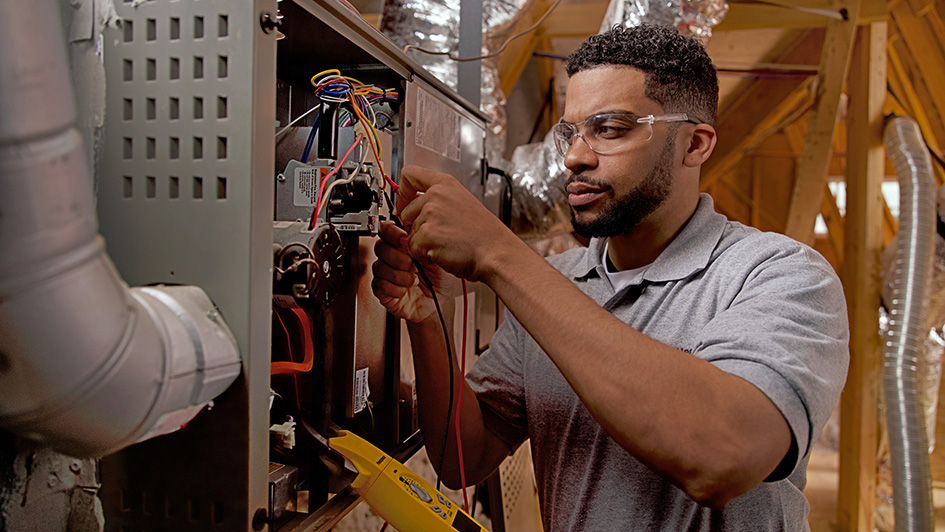
A furnace is often a background player in your home, ensuring you're warm in the cold winter months. It regularly won't be noticed until something breaks down.
One root cause may be that your furnace has a cracked heat exchanger. It can potentially be hazardous, so it’s critical to learn the evidence of a cracked heat exchanger and what to do if you suspect that might be the problem.
What Is a Heat Exchanger in a Furnace?
A heat exchanger helps move heat from the combustion chamber in your furnace to the air that circulates through the air ducts. It generally handles this using coils or tubes that heat up the air while functioning as a barrier to keep the gasses created in the combustion chamber, called flue gasses, from escaping out into your home.
Is a Cracked Heat Exchanger Dangerous?
Given its key role, it isn't surprising that a damaged heat exchanger can pose a risk. A damaged heat exchanger can allow dangerous gasses – such as carbon monoxide, which can be lethal – to circulate across your home.
For obvious reasons, never turn on your heater if you suspect you're dealing with a cracked heat exchanger, as letting it run could make the whole family sick. Call an HVAC professional immediately if you are worried your heater has a cracked heat exchanger that needs repair.
Four Signs of a Cracked Heat Exchanger:
- Furnace turns off: A cracked heat exchanger may cause your furnace to turn off.
- Odd Smells: If the air coming out of your furnace has a strong chemical smell, it might be a sign gas is leaking through cracks in your heat exchanger. These byproducts, which may smell like formaldehyde, are a major warning sign.
- Carbon monoxide alarm initiates or you feel symptoms of poisoning: If a cracked heat exchanger is emitting carbon monoxide inside your home, your carbon monoxide alarm could go off or household members may struggle with signs of carbon monoxide poisoning. Complications include headaches, dizziness, weakness, nausea, vomiting or feeling tired. If your alarm goes off or you feel sick, leave the home as soon as you can and then call for help.
- Soot: If you find black sooty buildup near the exterior of your furnace, it’s an indication something may be seriously wrong.
What You Can Do if the Furnace Heat Exchanger is Cracked
If you suspect your furnace has a cracked heat exchanger, contact a pro experienced in furnace installation Newton as soon as possible so they can inspect your system and, if needed, perform a furnace heat exchanger replacement. Costs should differ depending on the situation, but estimates often hover around $1,000 to $3,000.
Fortunately, the good news is that heat exchangers are often covered by the warranty. You should confirm the warranty paperwork on your furnace, since while the warranty might not cover the entire cost of repairs, it could significantly lower your bill.
How to Avoid a Cracked Heat Exchanger in Your Home
One of the most convenient ways to prevent a problem in your furnace overall is via regular furnace maintenance. Furnaces work the best when they run efficiently. Calling a certified professional to check your furnace for worn-out parts, clogs in the air filters and other likely problems can help you avoid getting a big bill later on.
It’s also a good idea to review your furnace filters every few months – it’s encouraged some filters be changed every 90 days or sooner if they are dirty or grimy. While the filters aren't connected to the heat exchanger itself, the strain of pulling air through a clogged filter makes your entire furnace work more vigorously to accomplish its job. And the harder your furnace has to work, the more wear and tear components like the heat exchanger will endure.


